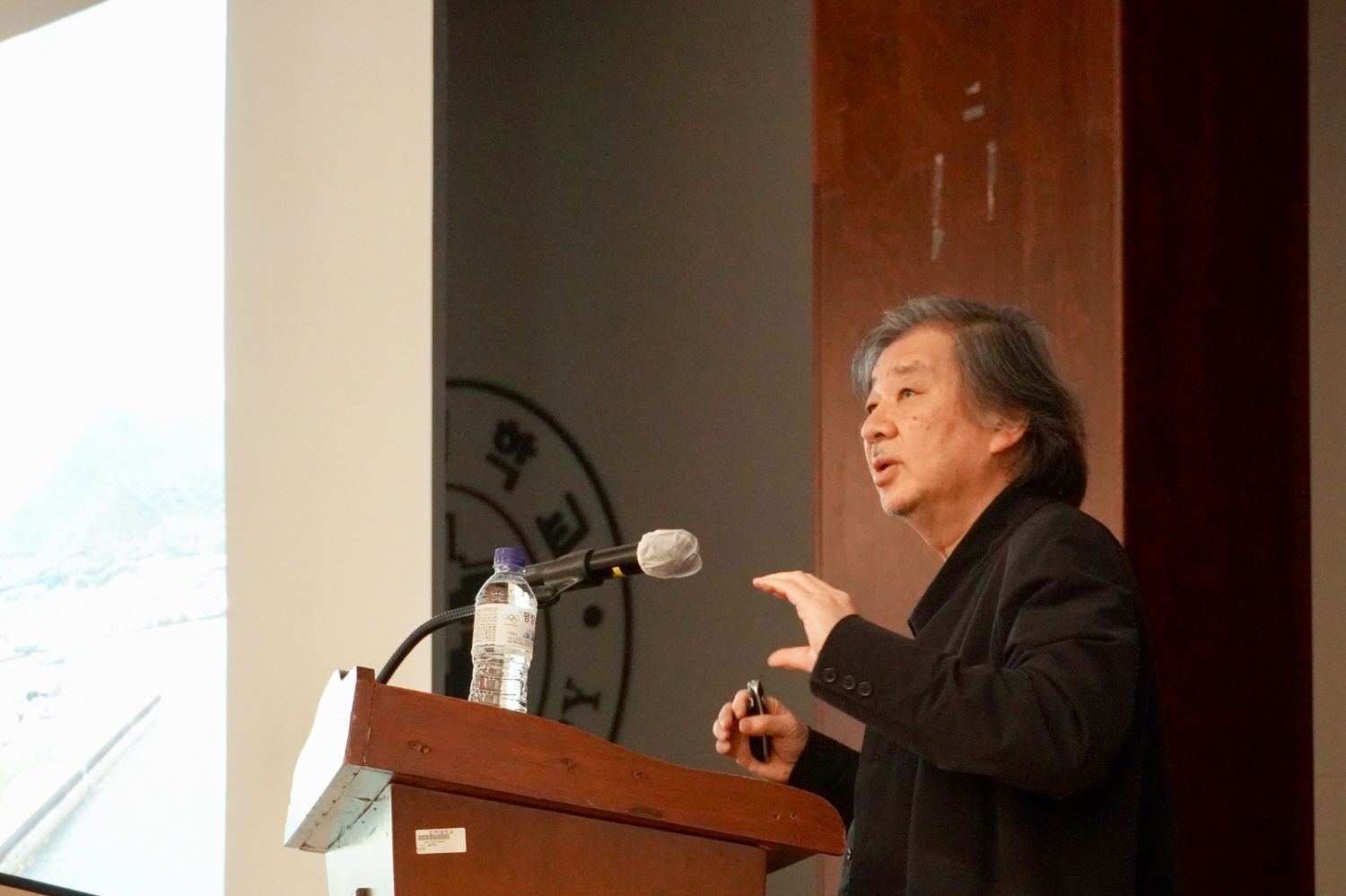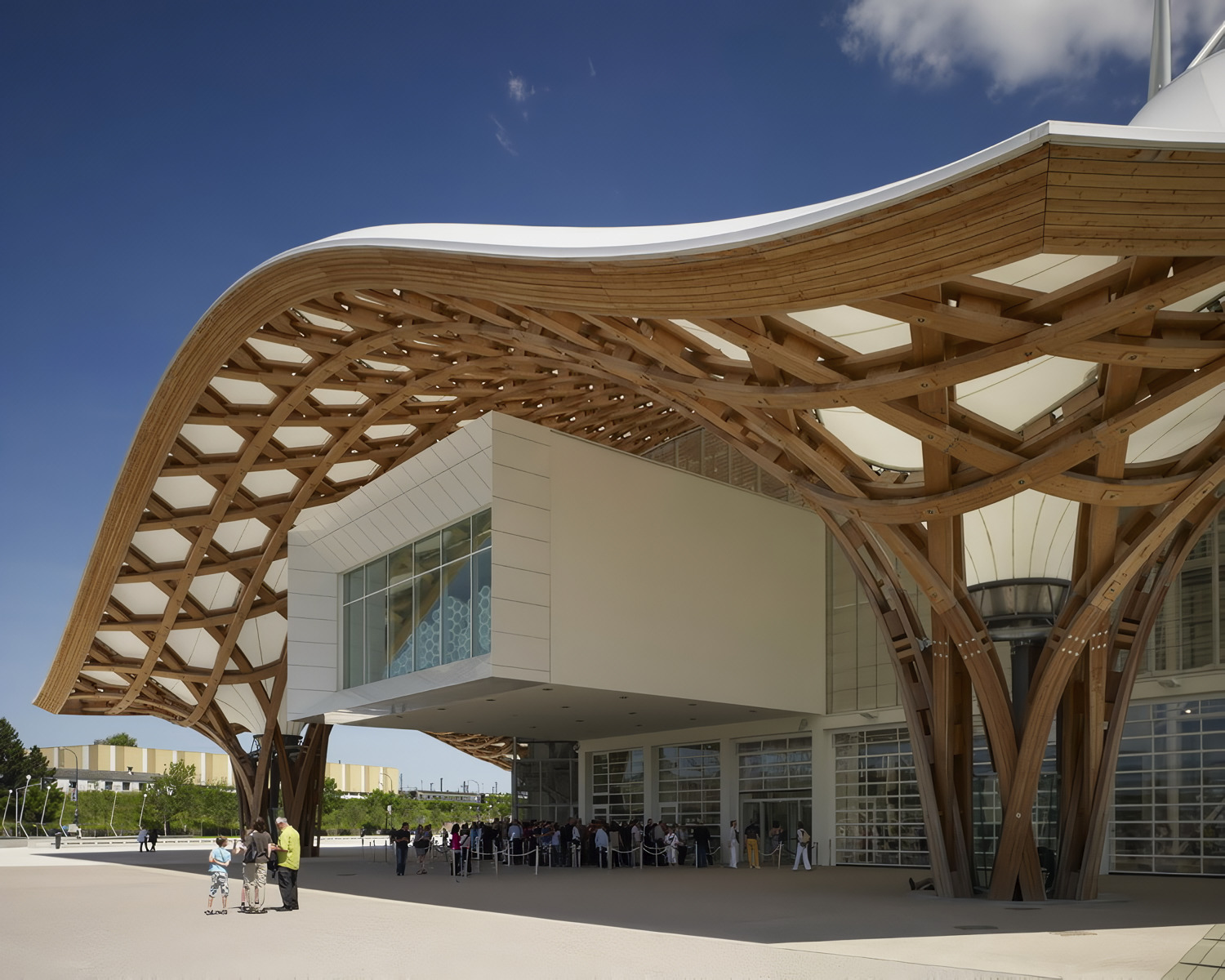SPACE May 2024 (No. 678)

View of ‘INHA Lecture Series: Shigeru Ban’ ©Oh Doyoun

Centre Pompidou-Metz (2010) Image courtesy of Shigeru Ban Architects / ©Didier Boy de la Tour
On Mar. 18, 2024, Ban Shigeru’s lecture took place at Inha University as part of the ‘INHA Lecture Series: Shigeru Ban’. Ban Shigeru, who won the Pritzker Architecture Prize in 2014 for his creative approach to architectural material and structures, and for his social contribution at disaster sites, delivered the lecture, ‘Balancing Between the Architectural Works and Disaster Relief’. At the podium, he first introduced how he came about to work at disaster sites. He offered critique, noting that ‘although there are more casualties resulting from the collapse of buildings than the earthquake itself, many architects are only interested in post- disaster recovery and new construction projects’ and stressed that it is the responsibility of architects to improve the quality of citizen’s life through spatial design until the full reconstruction of their city.
Following these points, the lecture focused on his major projects that engaged with research into materials and structure. In mentioning the Alvar Aalto Exhibition Design (1986) which initiated paper architecture, he explained the discovery of paper during the search of a substitute for wood, a primary material in Aalto’s architecture, under a budget constraint. Paper tubes made from recycled paper came to be an effective material that retained the warmth of wood, while at the same time being inexpensive and reducing the amount of waste after the exhibition. Starting with the use of paper tubes for exhibition hall partitions and roof structures for this project, Ban Shigeru further researched paper pipes that could be freely adjusted in length and diameter while also having structural strength, and later began to actively use them at disaster sites.
The Nomadic Museum (2005 – 2006) used international standard shipping containers to create an art museum that could be easily disassembled and assembled, allowing exhibitions to be moved from place to place, while at the Expo 2000 Japan Pavilion Hannover (2000) he collaborated with Frei Otto in exploring the limits of paper architecture by taping paper pipes and wood together and creating a shell form, applying a membrane structure. With a particular focus on recycling, he substituted concrete with wooden boxes filled with sand for foundations, which demonstrated his commitment to environmental issues. In following presentations including the Centre Pompidou-Metz (2010), a wooden structure building inspired by bamboo hats and assembled without steel joints, Haesley Nine Bridges Golf Clubhouse (2010), and Mt.Fuji World Heritage Centre (2017), Ban Shigeru’s efforts as an architect seeking new structural solutions is plainly evident.
The latter half of the lecture focused on disaster projects. Beginning with Paper House (1995), from the time of the huge earthquake in Kobe, which constructed walls with paper tubes after a foundation made from beer crates filled with sand, he introduced various examples of architecture during disastrous situations using locally available materials such as broken bricks and bamboo. He designed the Cardboard Cathedral (2011) made from containers and paper tubes to substitute a collapsed cathedral building during an earthquake in New Zealand, and he is building Hospital in Lviv in a war zone in Ukraine based on his experience in large-scale wooden construction. The last part of the event was a Q&A session. In answer to a question on the meaning of activities at disastrous sites, he suggested that, ‘Although the disaster relief activities of architects are not normally considered and are even taken for granted as is in the medical field, I believe that the essence of the two is not different in terms of helping to support in saving lives,’ sending a ripple of agreement through the assembled professors and architecture students.





